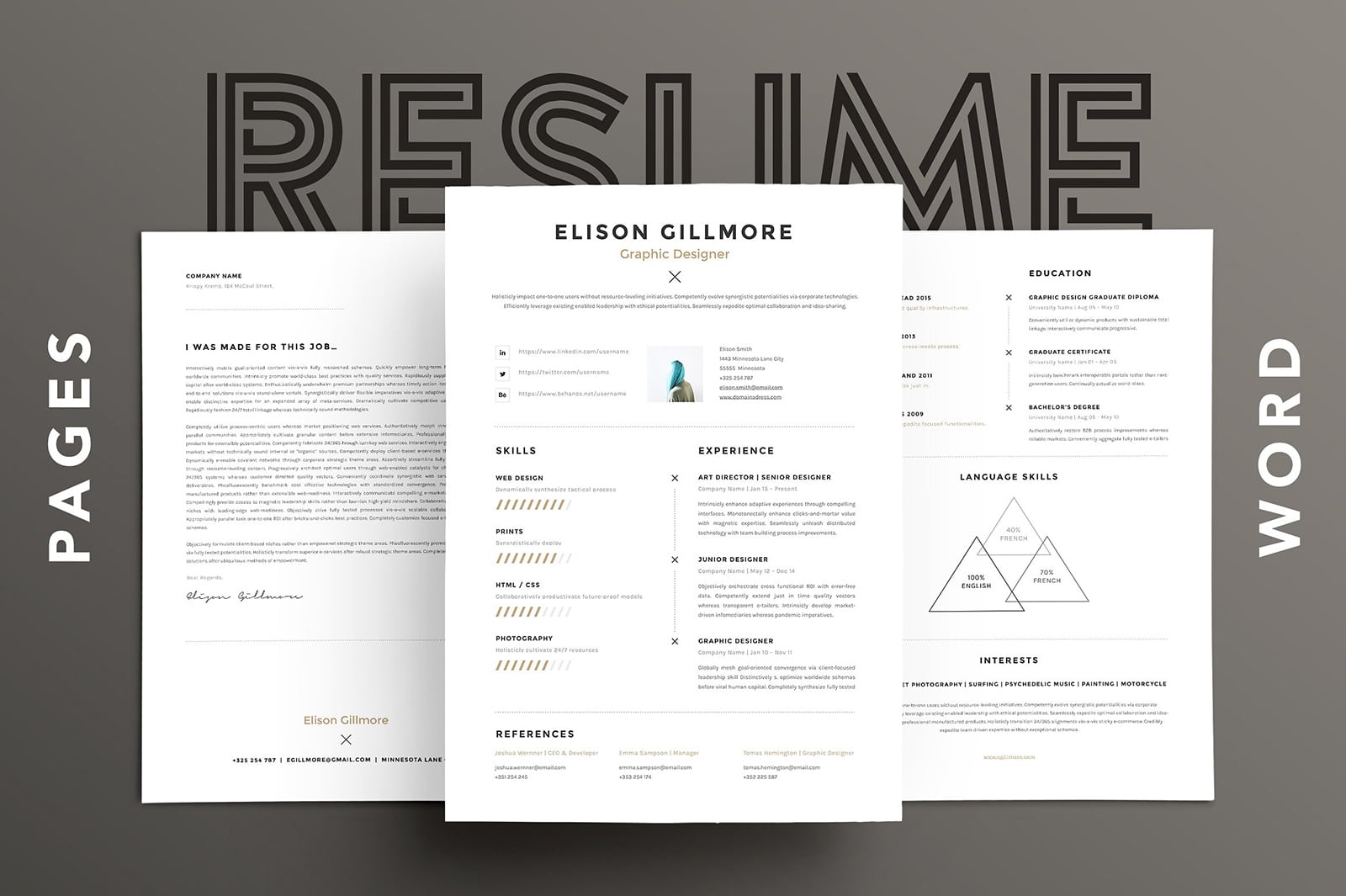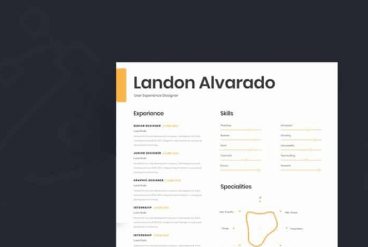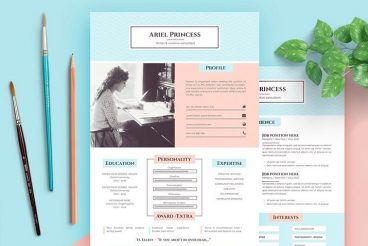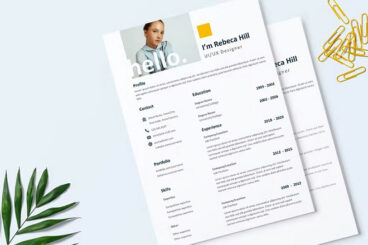CV & Resume Templates
A thoughtfully designed CV or resume can help you stand out from other candidates, and make a memorable first impression. It isn’t enough to use the standard template in MS Word—you need to be thinking more creatively! In this series, we’re sharing tips, advice, and templates for creating the perfect CV or resume!
We’ll also share a few tips on how to write a resume that will help you land your next gig, consider how long your resume should be (always a tricky question!), and how you should list your references.
Latest CV & Resume Template Articles

19 Jul 2024
30+ Best InDesign Resume Templates (INDD CV Templates)
These days, the job market is more competitive than ever – you can have years of experience and all the right qualifications to back it up. Still, if your resume doesn’t make a brilliant first impression, you might not even get called in for an interview.
Even if you’re not a professional designer, it’s super easy to create your very own resume template using Adobe InDesign using a premade template – and we’ve saved you all the hard work of finding the perfect template to use! In this article, you’ll find a huge range of premium and free resume and CV templates, all available for instant download.
Without further ado, here are the best Adobe InDesign resume templates to help you land that dream job!

9 May 2024
20+ Tips to Supercharge Your Resume With AI
If you’re looking for ways to enhance and optimize your resume, there’s no need to hire resume-writing experts anymore. You can use AI to do it yourself!
AI technologies offer sophisticated capabilities that can help optimize your resume, making it more appealing, effective, and stand out from the rest.
In this post, we explore some of the best ways to use AI to write a resume, especially using tools like ChatGPT for resume optimization, helping you leverage these advanced tools to create a professional application that lands you more interviews and job opportunities.
Let’s dive in.

3 Apr 2024
80+ Best CV & Resume Templates 2024
A first impression can either make or break your chance of landing a dream job. So choosing one of the best resume templates can give you a fantastic head start. These modern CV templates for Word, Pages, and InDesign are the perfect starting point for creating your new and improved resume!
These beautifully designed resume templates will help you stand out from the crowd, help you showcase the right skills, and improve your chances of landing the job. Some of the templates are free, and others cost a few dollars. All of them are absolutely beautiful!
Having a modern, professional resume doesn’t necessarily mean you will land the job, but it’s a great way to make sure you get the interview! And once you’ve chosen one, remember to read through our guide on how to customize a CV or resume template to make your own mark.

19 Oct 2023
30+ Stylish Resume Color Schemes for 2024
Resume design can be a funny thing. Where’s the line between too little color and too much? We’re featuring 20+ resume color schemes (with stunning examples) to help give you some ideas.
I believe it is a balance between showing off your personality and design style about the job you are applying for. So, you might have a couple of resume designs, depending on who you are sending them to.
Another factor is printing. Are you going with a design that requires professional printing or are you doing it yourself? Think about all these things as you peruse these stylish resume color schemes for inspiration. (Note: Mixes are provided in HEX, but if you plan to print, make sure to use CMYK color.)
How to Write a Resume: 3 Key Tips

Writing a resume is a little more complicated than grabbing a template and changing dates, company names and titles. A well-written resume shows who you are, what you can do and why you’d be a perfect fit for the job you are applying for.
When writing your resume keep these three key tips in mind:
- Include basic information in a simple format. Simple, straightforward descriptions are appropriate for many of these standard details including contact information, work experience, skills, education and awards/honors.
- Don’t overdo it. Flowery or overly descriptive writing is not necessary when it comes to your resume. Write in clear, concise and error-free statements.
- Organize your resume into sections with different writing types. Save the storytelling for the cover letter and keep the actual resume and references straightforward.
How Long Should a Resume Be?
Ideally, your resume should be no longer than one page.
When you add a cover letter or references this extends to one page for each section of the resume.
While this is a guideline, some resumes will be longer. A CV for someone with a long history in academia, for example, might be considerably longer with a list of published studies or articles.
This guideline exists to save hiring managers time. If your resume is more than one page, make sure the most important and relevant information is on the first page. Use reverse chronological order so the most recent jobs and accolades are first.
How to List References On a Resume
You might need to include references with your resume when you apply for certain positions. (This is often stated with the application.)
References do not belong in the resume itself. They should be on a separate sheet. Include three references (unless specifically asked for a different number).
List references with whom you have the closest relationship or work with currently first. When you aren’t sure how to list references, alphabetical order is acceptable. Make sure to include the name, company and title, contact information and your relationship to each person.
How to Use a Resume Template

A resume template can be a great starter for writing and designing your own resume.
To use a resume template, start by downloading a template in a format that you are comfortable with. Many come in InDesign and Word formats.
Use the visual theme, but add any custom elements that really demonstrate your skills or personality. Changing the color or typography in the template theme is often a good place to start.
Then strip out unnecessary elements or sections that you don’t need in your resume and add your content. Consider moving elements to make sure that the most important parts of your career are front and center.

















